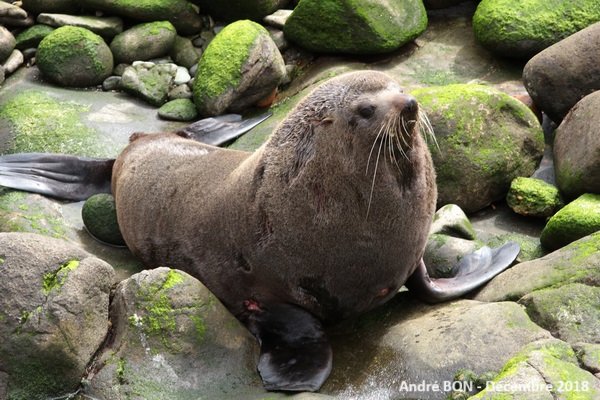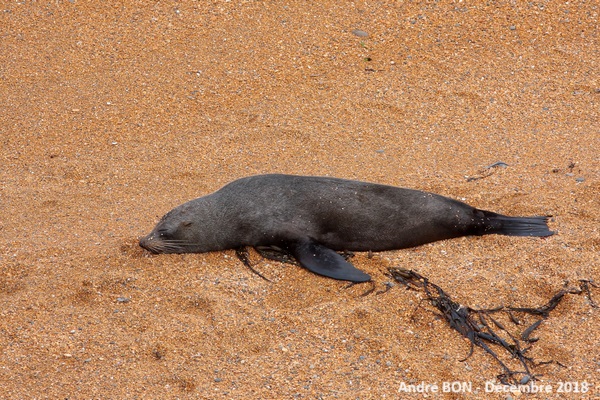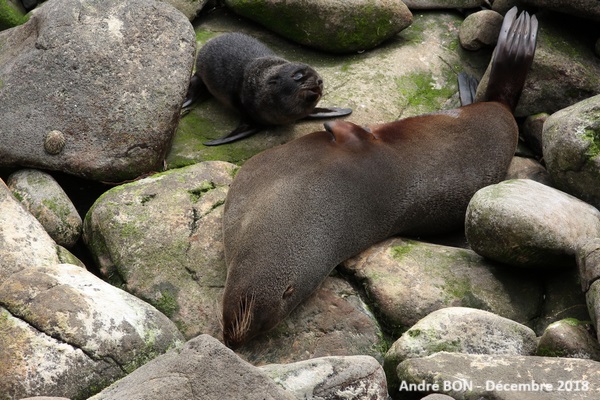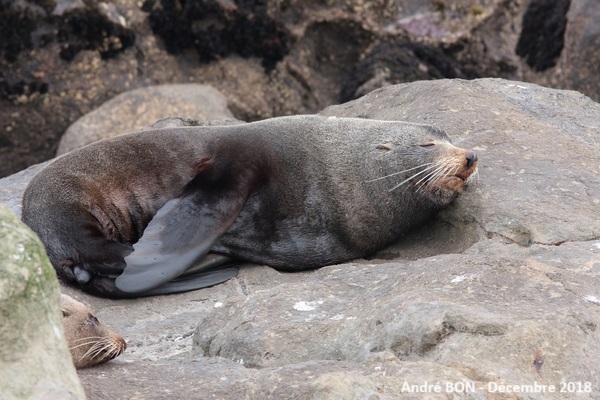




| New Zealand Fur Seal (Arctocephalus forsteri (Lesson, 1828)) |





|
|
Scientific name: Arctocephalus forsteri (Lesson, 1828) Common name: New Zealand Fur Seal Other names: South Australian Fur Seal, Australasian Fur Seal, Antipodean Fur Seal, Long-nosed Fur Seal. Maori name : Kekeno. French name: Otarie à fourrure de Nouvelle Zélande Family: Otariidae Size: Weight: 120 to 180 kg for males (maximum observed weight 250 kg) and 30 to 50 kg for females (maximum observed weight 90 kg); Body size: 1.5 to 2.5 m for males and 1 to 1.5 m for females. Biotope: Rocky coasts protecting from big ocean waves, beaches with large rocks, ledges allowing easy access to the sea. Food: Cephalopods, fish and a few birds. Longevity : Up to 19 years for males and 25 years for females. Geographic area: Southern and southwestern coasts of Australia, southern coasts of Tasmania, coasts of New Zealand especially on the South Island. |
New Zealand Fur Seals have pointy noses, long whiskers and small ears. There is strong sexual dimorphism. Males have massive necks and shoulders with longer hair forming a coarse mane. Females, significantly smaller, have a more slender silhouette. The adult coat is made up of two layers. The covering hairs, dark grey-brown in colour, become lighter on the underside of the body. The dark brown undercoat is much darker. The coat appears black when wet. Males take over a territory which they defend and mate with 5 to 8 females. The breeding season is from October to January. New Zealand Fur Seals can dive long and deep, 15 minutes and 380 meters for males and 9 minutes and 310 meters for females. |
| [To know more about the New Zealand Fur Seal] [Next picture] [Top] |

|
Here is a male and his massive neck and shoulders. You can see the small ears that differentiate otariids from true seals. The latter do not have visible ears. |
| [To know more about the New Zealand Fur Seal] [Next picture] [Previous picture] [Top] |

|
Here is a female and its much more slender silhouette. How nice it is to take a little nap on the beach! |
| [To know more about the New Zealand Fur Seal] [Next picture] [Previous picture] [Top] |

|
The young of the year are already born. This one is getting ready to breastfeed. |
| [To know more about the New Zealand Fur Seal] [Next picture] [Previous picture] [Top] |

|
We saw a male fight, probably for the defence of a territory. |
| [To know more about the New Zealand Fur Seal] [Previous picture] [Top] |

|
Here's another male taking a nap. |